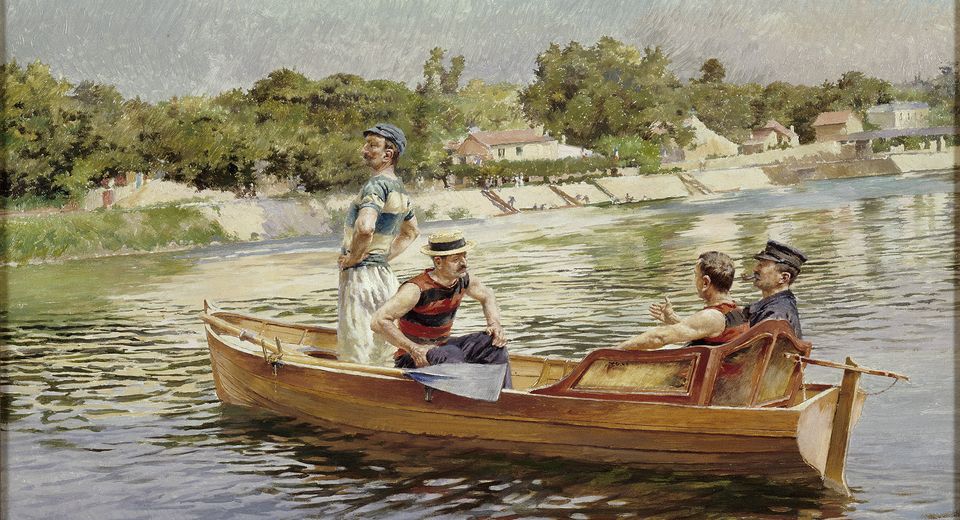Yawl ride
Paris
Oil on canvas
Entertainment, art, luxury, leisure or sport: pleasure boating has many facets. In France, boating developed in the early 19th century in the wake of the British. From Parisian canoeists cruising down the Seine to regatta sailors, many took up the challenge, rowing or sailing, on a wide variety of light craft. Clippers, yawls, skiffs, Norwegian boats and even periscope boats populate the Seine, much to the delight of journalists, writers and artists.
The pleasures of water
The pleasures of water
In the 19th century, physical exercise and leisure activities became increasingly popular among city dwellers, who spent their free time on the waterways around the capital. Water sports, encouraged by the railways and later captured on the spot by the Impressionist painters, enjoyed great success and became a veritable art of living.
On the Seine, despite the installation of a makeshift mast and sail, the traditional flat-bottomed boats were no longer sufficient to create the maritime illusion. In the 1840s, the most expert and well-to-do yachtsmen decided to import canoes from the Normandy coast, as service craft for harbours and ships. This was an essential step, as river cruising in Paris was given sails and a name: canoeing.
A new culture
Canoeing was associated with a number of festive activities typical of the popular culture of guinguettes, while at the same time "serious" canoeing was developing, designed as a patriotic and sporting breeding ground for the Navy's new hopefuls. The canotier and especially the canotière became the new "types" of Parisians, fashionable faces that graced the covers of cheap illustrated magazines.
The painter Ferdinand Gueldry contributed to the development of this iconography. A member of the Société Nautique de la Marne in Joinville-le-Pont, he won many races with his brother Victor. In his studio in Bry-sur-Marne, he reproduced on canvas the scenes of life surrounding this practice, playing on the reflections of the water to give an almost impressionist evocation of the banks of the Marne.
Collection highlight
Discover the must-see works at the Musée national de la Marine.

